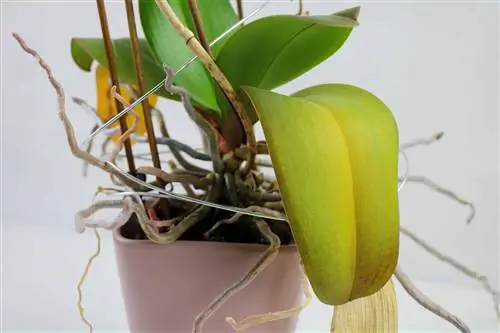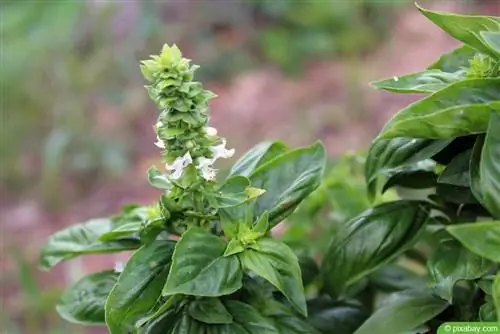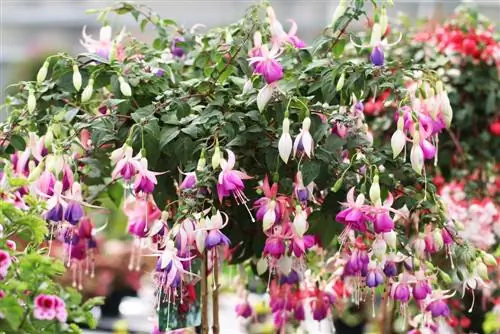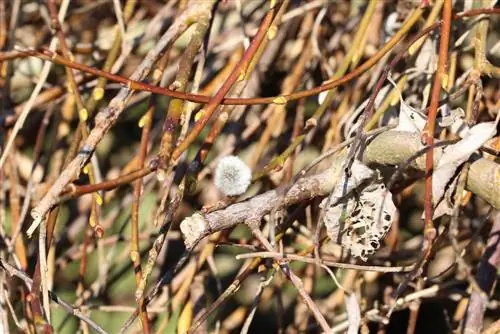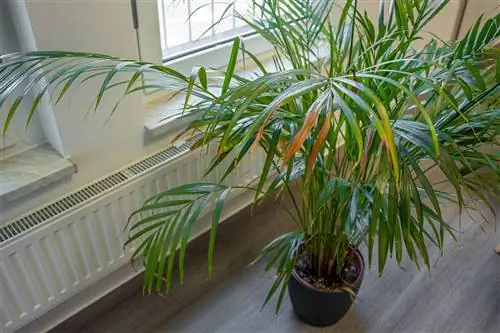- Author admin [email protected].
- Public 2023-12-17 03:39.
- Last modified 2025-06-01 06:48.
If plants leave their leaves hanging despite water, this can have various causes. In order to prevent death by taking rapid action, you should find out about the possible causes and effective countermeasures here.
Drooping leaves - causes
Drooping plant leaves are most often due to two causes that can be easily remedied if you act quickly:
Too little water
Drought, especially in water-loving plants, primarily leads to a loss of stability in the leaves and petioles, causing them to hang further and further down. To be absolutely sure that dryness is the cause of drooping leaves, you can check the soil surface using a thumb test. To do this, the thumb is pressed into the surface of the earth. If it is difficult or impossible to press in further than two centimeters, the plant is lacking moisture. Quick help is needed here, which looks like this:
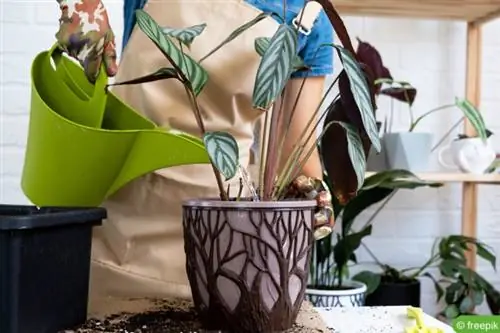
- Unpotting potted plants
- Dip roots in bucket of water
- Let the roots soak until no more air bubbles appear
- drain and repot
- For bedding plants, remove the soil surface as deeply as possible and fill the planting hole generously with water
- alternatively, create a “water dam” around the affected plant with soil and water until water no longer sinks in
Too much water
If leaves turn yellow in addition to drooping, this is mostly due to too much water. Too much water and waterlogging block the roots' ability to absorb water. As a result, the leaves receive too little moisture and tend to bend downwards.
You can recognize that the soil moisture is too high when the earth's surface gives way when lightly pressed with your finger, is muddy and may have a musty smell. In advanced stages, mold infestation is not uncommon. This should be done in the following way:
- Unpotting potted plants
- remove moist soil as much as possible from the roots
- Clean and dry the plant container
- Allow the plant to air dry for a few hours (never let it dry over heaters or in direct sunlight)
- then pot the plant in fresh, dry substrate
- Reduce watering quantities in the future or adapt them to requirements
- remove as much wet soil as possible from bedding plants
- Open the planting hole for a few hours and let it air dry
- shoot the root area with dry soil and do not water for a few days

Note:
If water collects on the earth's surface, this is often a sign of compacted earth. Then water does not reach the root tips and the cause of hanging leaves is, in the second instance, a lack of water, which must be counteracted as described under “Too little water”.
Other possible causes
In addition to too much and too little water, other causes can also be responsible for hanging leaves on plants:
Weakened by repotting/transplanting
Plants are exposed to a lot of stress when they are repotted or transplanted. The plants need some time to establish their roots in fresh soil and get used to new conditions. This results in plant weakness, which can result in drooping leaves. As a rule, affected plants recover on their own within a short period of time.
Too dark location
Plants that rely on photosynthesis to generate energy quickly lose their leaves if the location is too dark. If there is a lack of light, photosynthesis only works to a limited extent or no longer works at all. This means there is a lack of energy, which plants need for their stability, among other things. The leaves sag accordingly.
In this case, you should find out about the light requirements of the affected plant and change the location according to the respective plant needs. The plants usually recover within a few hours.
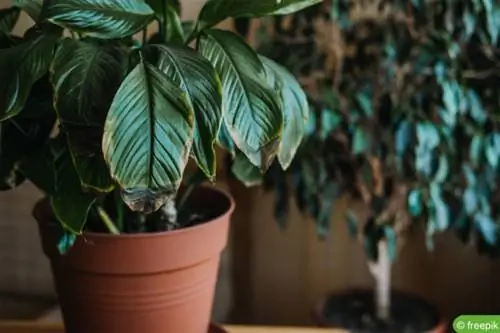
Tip:
A plant strengthening agent can be administered as a support, for example by watering field horsetail decoction.
Temperatures too low
Mainly indoor and cold-sensitive garden plants often react to temperatures that are too low with drooping leaves. This has to do with energy. When the environment is too cold, many plants switch to “survival mode” and slow down their metabolism, thereby saving energy. This is particularly noticeable in the leaves, which begin to droop. If the temperature rises back into the “comfortable zone”, the energy supply increases automatically and the leaves straighten up again.
If this is the cause of drooping leaves, you should find out the preferred ambient temperature and place the plant warmer.
Too small planter
If the roots cannot expand sufficiently well in a planter that is too small, plants begin to weaken because growth and supply problems occur. This can be remedied by repotting it into a larger container.
Frequently asked questions
How quickly do plants die due to drooping leaves?
It depends on the cause and overall he alth. While plants quickly recover on their own after repotting/transplanting or changing location, dryness, too much moisture and temperatures that are too low can cause sick or weakened plants to die within a week. If the plants were previously strong and he althy, the process usually takes a little longer. Ideally, you should act immediately so that it doesn't get to that point.
Can all plants be affected by drooping leaves?
No. This usually only affects plants with longer/larger leaves that grow on green, non-woody stems. Leaves on cacti or fruit trees, for example, do not hang, but rather react with an unusually high amount of leaf drop.

